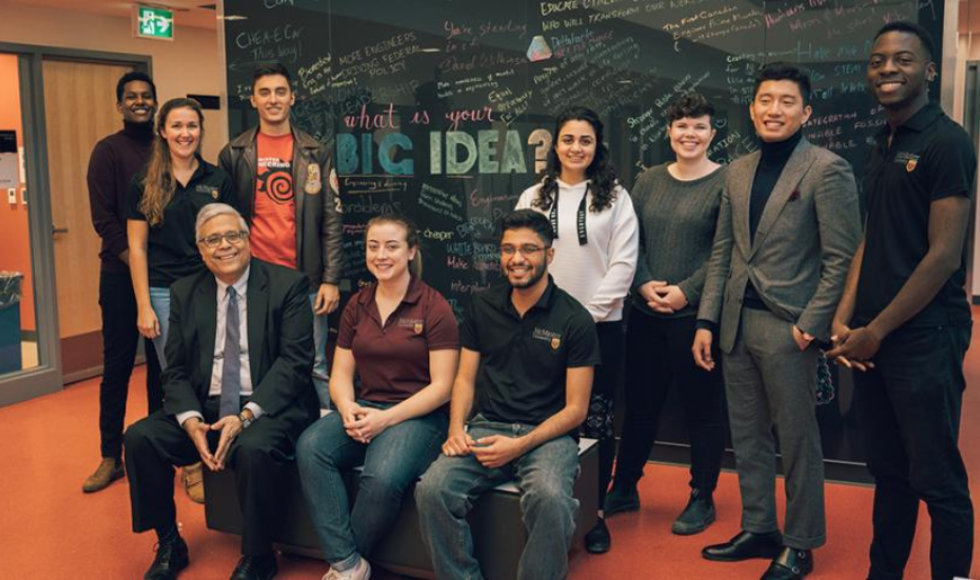Making engineering more inclusive

“We believe that engineering is for everyone and that’s the mantra we stand by.” These words from McMaster University’s Faculty of Engineering Dean Ishwar Puri are inspiring in the context of pervasive attitudes towards traditionally male-dominated fields like engineering.
McMaster’s mantra is paying off. This fall, 27 per cent of first-year engineering students are women, up five per cent from 2017. Paired with a 95 per cent retention rate for female students in their first year of studies, the faculty is leading by example when it comes to promoting diversity and inclusion in engineering. “It’s ingrained in our culture,” says Puri.

Reflection and restructuring key to diversity in engineering
Over the last five years, McMaster Engineering has focused its attention on continuing to build a more positive learning environment for all students. Restructuring welcome week activities to be more inclusive, shifting hiring practices to ensure diversity, and sharing the stories of successful female engineering students, faculty, and alumni have all contributed to a ripple of positive change for women in engineering.
The faculty is also the host institution of the new Ontario Network of Women in Engineering (ONWiE) Chair, Kim Jones. “McMaster believes in cooperation, not competition,” says Jones, who is also a faculty member in the Department of Chemical Engineering. “Everyone is working towards the same end goal.”
McMaster has been laser-focused on creating cultural change and paving the way for greater gender diversity and inclusivity within the Faculty. There are more than 30 clubs and teams that students can join, with a number focused on improving diversity, such as the Women in Engineering Society, EngiQueers and the National Society for Black Engineers.
Last year, the Faculty also established the Integrated Biomedical Engineering and Health Sciences program. The groundbreaking program is a major attractor of female engineers and has a 50 per cent gender parity ratio.
“This is only the beginning for women in engineering,” says Marilyn Lightstone, chair of the Department of Mechanical Engineering and one of the drivers behind diversifying hiring practices at McMaster.
“Our short-term goal was 30 per cent of Canadian engineers are women by 2030.” But the faculty is working towards surpassing that number even sooner. “As we get closer to gender parity, it will be time to reevaluate our goals,” adds Puri.

Q&A
Mediaplanet spoke with Kim Jones about her new role as ONWiE Chair and McMaster’s inclusive environment.
Mediaplanet: How does McMaster Engineering promote inclusivity and diversity?
Kim Jones With the Dean’s leadership, the Faculty has made more equitable hiring practices a priority — 41 percent of recently hired faculty are women. That’s important because a barrier for women in STEM is a lack of role models. When women are in front of the classroom, female students feel represented, which breeds success.
MP: Why is McMaster the right environment for you to thrive in your new role?
KJ: McMaster is a role model for broadening diversity in engineering. The Dean, staff and faculty have provided unprecedented support to ONWiE goals and initiatives.
MP: What do you hope to achieve as chair of ONWiE?
KJ: My number one goal is to bring the knowledge, focus and time to our efforts in improving the number of female applicants in engineering programs at Ontario universities.
This feature appeared in Women In STEM 2018, a Media Planet digital campaign. Read the Media Planet version of the article.
Here’s more on McMaster Engineering’s inclusive and diverse environment.


